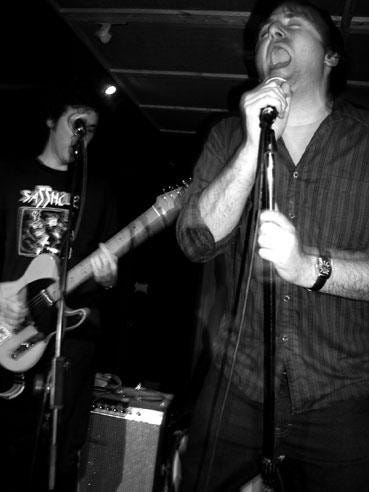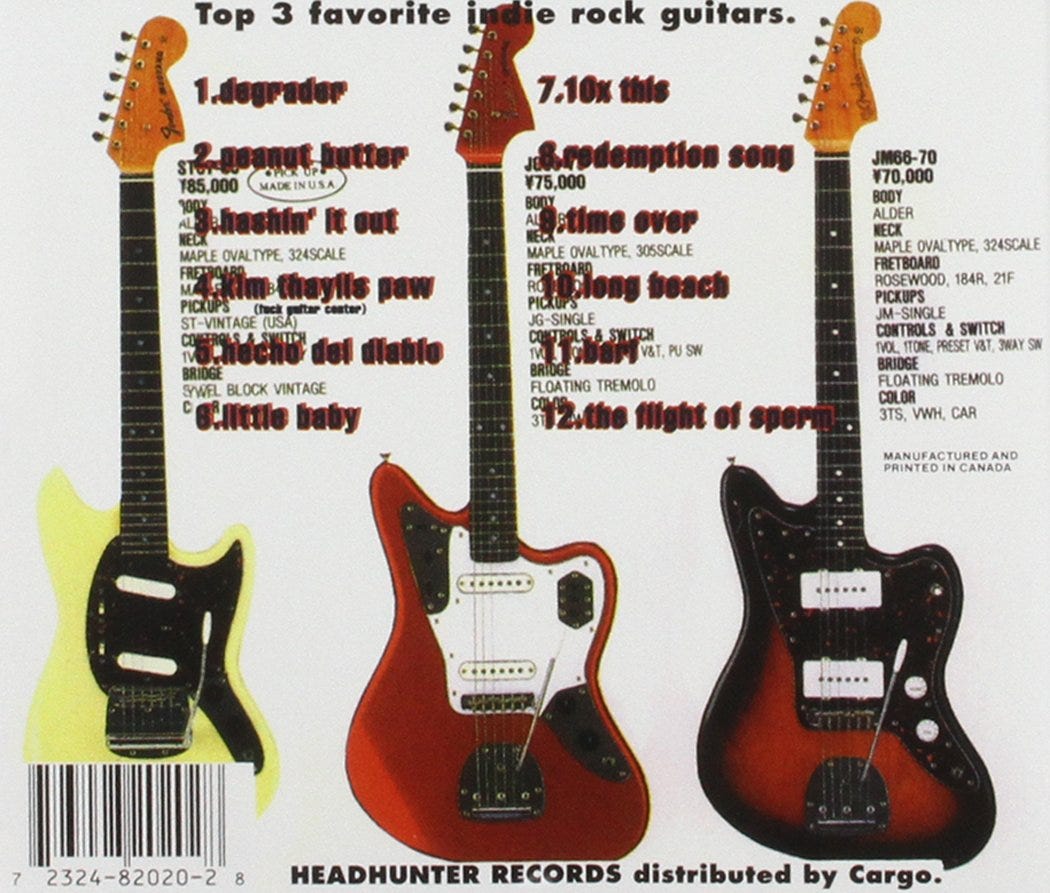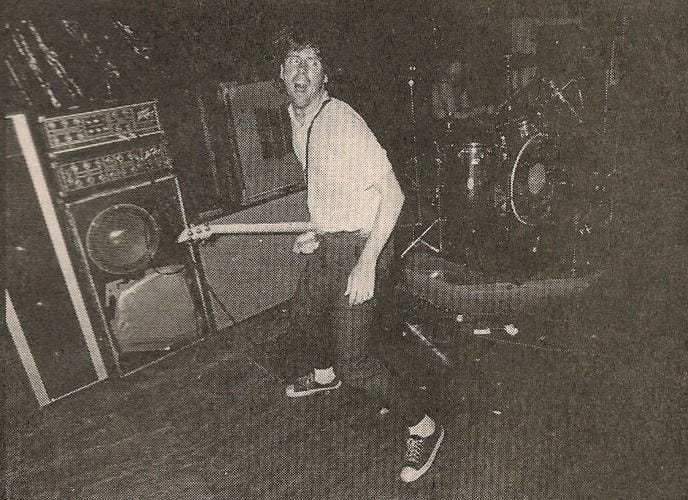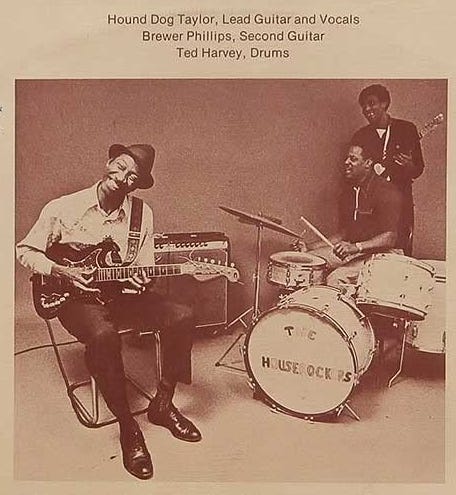Buzzcocks, Clone-amones, FM Knives, Social Circkle, the Solid State Amplifiers of the Stars
here's the MRR column I always wanted
Of the big 3 or 4 of the UK punk class of '76-'77, it's the BUZZCOCKS that have stuck with me. They legit started from (spiral) scratch and showed everyone the way DIY-style, not being seasoned pub rockers like the pistols or clash, and having the first big self-released indie 7" of the period. The band never seemed to buy into the impulsive visual or behavioral flamboyance of many of their peers, and in their dense but short-lived catalog (3 LPs and a dozen+ singles/EPs in 2 years?!) the songwriting principals expressed exquisite and enduring heartsickness and anxiety that reverberate all over much of what I like and listen to from their era forward. Pete Shelley had also been an experimental synth noise practitioner all along, building and recording drone oscillators in the early 70s, and this interest later bloomed with his synth pop solo period, and the hit single "Homosapien" that was banned in the UK due to its openness about gay sexuality. Could he be any more cool?
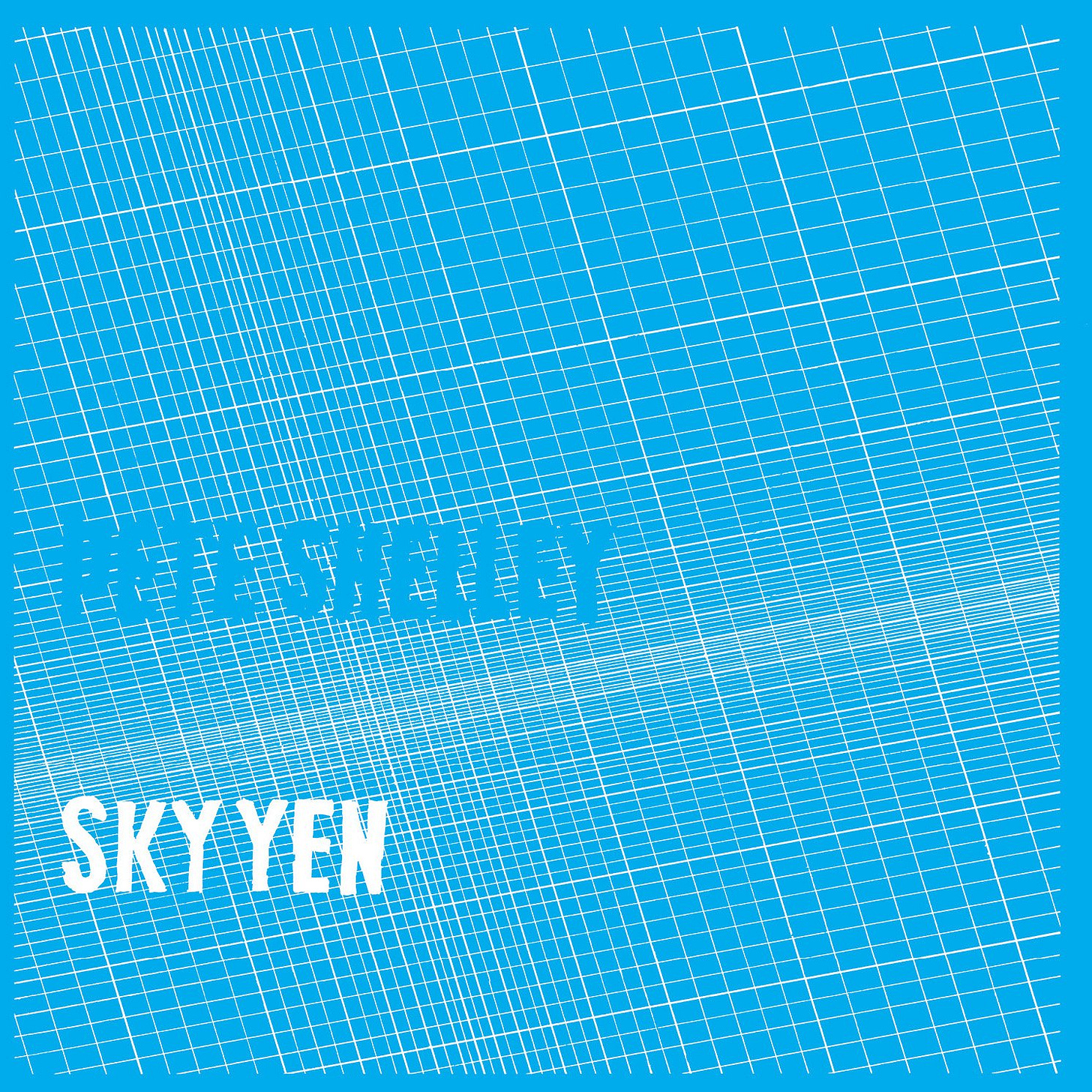
It's a little weird to consider that there was a period in the 90s where there was agreement among many in the US and elsewhere that punk should regress away from hardcore and the other innumerable offshoots, and bands should simply (and in their minds, defiantly) imitate THE RAMONES. Not just be influenced by the Ramones, but precisely mimic the Ramones: dress like the Ramones, play Mosrite guitars with Marshall stacks, co-opt their iconography and cover art, re-record whole Ramones LPs. And this all at a time when the Ramones were all still alive and touring, and cities had, separate from the punk scene, Ramones cover bands for hire. I mean, I fucking love the Ramones but I found this all super puzzling. It shocked no one that many of the tentpole figures of this movement, like Johnny Ramone himself, revealed themselves offstage to be conservatism-aligned, temperamental, reactionary grumps, but then we never got the balance of Joey's fragile, dreamy weirdo presence from many of these groups.
I should be one to denigrate mimicry though - twenty odd years beyond Singles Going Steady, Sacramento's FM KNIVES celebrated the nuances of the Buzzcocks' artistry to such a startling degree that I honestly thought theirs was Buzzcocks reunion material when I first heard it on college radio - and I could not get enough of it! In their 2002 LP Useless and Modern, the FM Knives of course had their own artistic voice and enhancements, with the benefit of additional decades of power pop and post-punk moves to assist in their projections of pogo-able existential angst and ennui. I'm sure fellow fans were with me in circling around this blasphemous thought: are the FM Knives actually better than the Buzzcocks?
I got to see the FM Knives a couple times, which incidentally solved two very nerdy mysteries:
1) Wizard Chris Woodhouse's raspy guitar tone: telecaster, RAT pedal, late model Fender tube combo (the blue-tolex Blues Deville/Hot Rod Deluxe series)
2) If you've ever had to drum in a punk band, there's a physical problem of having to play hi-hat 4/4 singles quite fast, while also hitting the snare sufficiently hard - this is tough while crossing your arms in standard grip for a whole set (but then eased a bit when you switch to the ride cymbal on the other side). The FM Knives' drummer managed this in his normally right-handed drum setup, by playing hats with his left hand and snare with right (thereby having no arm cross), and then switching to play ride cymbal with the right and snare with left - elegant! In some live footage, one can glimpse that Marky Ramone had a second closed hi-hat on the right side of the kit, as an alternative solution to this challenge.
Another idiosyncratic example of '70s pull-forward was found the in the killer 2009 City Shock LP from Boston's SOCIAL CIRCKLE. In their music I hear the coked-up octopus-like rapid drum pummeling of their local hardcore forebears Jerry's Kids, as well as Keith Morris' shouty vocal cadence and urban antipathy from the Circle Jerks' Group Sex. These are quality starting ingredients for winning hardcore punk, but the innovation here was marrying these elements to a spongy, clean guitar sound, recalling D. Boon and Andy Gill's percussive attack styles, and melodic guitar/bass interplay from the Buzzcocks and Gang of Four riffbooks. A couple passages really had me racking my brain and scouring the archives for Where Have I Heard This (the answers were found in A Different Kind of Tension and, interestingly, the first Television Personalities LP??).
Incidentally, with regard to problem 2) Social Circkle's drummer had the hi hat stand way up and the snare stand way down low (way below knee level) to manage the speed/power issue.
It has been interesting to observe the tastes and preferences in music gear among indie musicians over the years. It seems we have all fallen in line with the broader primacy and main flavors of tube guitar amps and emulations thereof, for better or worse, due largely I think to acculturation, marketing, and snobbery. But how can we ignore or even denigrate the more humble or curious plebian rigs of our shared underground rock predecessors? There's always been something a little off to me about having to compete in the same marketplace with the deep-pocketed Blues Lawyers of the world for the same 2 basic, expensive, temperamental 70 lb high voltage tolexed wood boxes. I spent a long time teaching myself electronics in order to DIY tube amplifier circuits that I just couldn't afford outright or otherwise locate/try, and after years and dozens of amps it kind of dawned on me that the results weren't very satisfying, and why am I relying on taste and technical advice from dudes that play in church bands and idolize Clapton? Anyway I thought it might be an interesting exercise to compile some of the more interesting equipment choices out there - in particular, the much-maligned solid state guitar amplifiers - of many of our heroes and paragons.
GREG GINN (BLACK FLAG) - over Flag's First Four Years, engineering hobbyist Ginn (famously his label SST - Solid State Transmitter - began as an electronics small business) invented a raging, anti-musical guitar style that was successfully imitated in technique (BL'AST and Annihilation Time being clear admirers) but none seemed to venture to bookmatch the tonal qualities of his trashy guitar roar. Aside from Ginn's choice of lucite Dan Armstrong guitar, it's been documented that he wound his own pickups, and he plugged straight into a Peavey 260 transistor PA head - it is thought he serially cascaded channels to generate the gain and clipping. I caught a photo of recent vintage Toronto punks SCHOOL JERKS who may have taken a similar approach, though with the guitarist's p90 les paul jr style guitar, he gets a stringier, trebly clang.
BOB MOULD (HUSKER DU era) -I'm of several minds when it comes to the guitar sounds in the Husker Du library. The classic LPs like Zen Arcade suffer from rushed production and some odd engineering choices - after Everything Falls Apart, it was Mould's preference to run his guitars straight into the recording console. I've lived with Zen Arcade long enough that the unbalanced, thin character of the guitars is just an essential part of the experience, but I could see where it would be a total turn off to new arrivals. Live bootlegs and demos then tantalizingly hint at the guitar power that could have inhabited those recordings - the demos and live stuff from the Savage Young Du reissue inform on how sweet Bob's flying V>MXR distortion+>various SS/tube amp combinations (Yamaha G100, roland jc 120) live setup probably was: compressed, static-y grind with plenty of low end, and sweeps of unpredictable harmonics popping off the speakers. If the original studio tapes still exist, a simple re-amping of Bob's guitar parts would just crack the sky open and summon the Shoggoth.
LOU BARLOW (DEEP WOUND) and MATT DOMINO (INFEST) - I have some photo evidence of Lou Barlow with a Peavey stack from the Deep Wound days, but have no idea what Matt Domino used on the Infest records - it certainly sounds gravelly and solid state. But the common theme here is, the guitar sounds in solo on these records are thin and reedy, yet somehow when placed in context and layered with bass, blast beats and vocal invective, they sound amazing. the opening riff of "where's the unity" is like a single solitary bumblebee, and then suddenly you're getting smashed in the face. It's psychoacoustic sorcery. Modern thrashers have gone great lengths for the attainment of heaviness, tuning guitars ever lower, chasing increasingly specific, exotic distortion devices and amplifiers; could it be that some simple but pivotal aural wisdom is getting lost in those pursuits?
ANDY GILL (GANG OF FOUR)- I wouldn’t have expected the guitar gear press/marketing apparatus to have paid so much tribute to Andy Gill on his passing in 2020, but plenty of nice things were written and I don’t see the need to recapitulate them here. His signature guitar voice was truly utilitarian, artfully maximizing the cheapest of commodity gear - strat copies, budget solid state amps (the Carlsbro Stingray Professional on Entertainment!). This approach to guitar happily matched his band's cold, anti-materialist outlook.
METAL - The world of extreme heavy music has built cults around several specific pieces of solid state gear - Acoustic Control Corp amps, the Sunn Beta Lead series, the Ampeg VH140, Randall RG100 series; a cottage industry of boutique makers has bloomed, cloning these models with their own interesting enhancements. What nobody seems interested in doing, is recreating the Marshall Valvestate amplifier, a gimmicky budget line from the 80s-90s that technically did have a tube stage or two in the preamp signal path, but in circuit analysis, didn't do much with them (so what was the point?). These are not the most remarkable things for whatever you think of as heavy tone, yet they found a champion in Scott Burns, a computer programmer whose gig as a recording engineer at Florida's Morrisound Studios had him shaping the sound of nearly every seminal death metal/grindcore/extreme hardcore record. The bedroom headbanger that wanted to recreate those early Deicide riffs or Terrorizer's World Downfall? If they were paying attention they'd know the amp to reach for, which for a time was plentiful and cheap in the used market - nobody "serious" wanted these things! As the original production run goes to irreparable failure due to its various design flaws, does the Valvestate become the next ridiculous piece of boutique unobtanium? The Scott Burns Sessions: A Life in Death Metal 1987-1997 was recently published; I have not peeped it but it looks like an obsessive's dream, providing oral history and notes on over 100 records.
Recent innovations in digital modeling and solid state technologies, like the class D power amp are hastening a democratization and perhaps evolution of guitar sounds. A 500 watt power section now weighs less than a guitar and fits into a backpack, saving the sacroiliacs of musicians everywhere. I can’t predict how this will all shake out - the death of the electric guitar has been predicted many times. I keep coming back to Hound Dog Taylor, who made really simple, dirty, incredibly fun music with the shittiest 70s Japanese copy guitars imaginable, a bass player that couldn’t get a bass and instead played a guitar like a bass, a drummer with 2 drums and one cymbal, and the following philosophy; "When I die," Taylor said, "they'll say, 'he couldn't play shit but he sure made it sound good.’”





